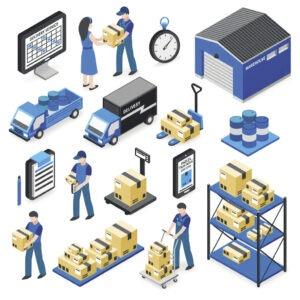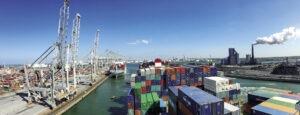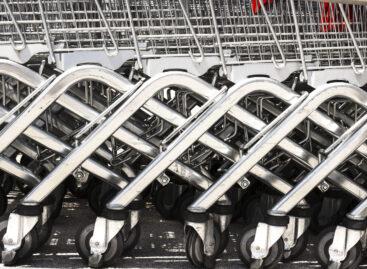Wholesale 2025: growth under margin pressure
According to TBRC, the global wholesale market will be worth USD 60,082bn in 2025, representing a 6% increase from 2024. The macroeconomic backdrop is subdued: the IMF expects a growth around 3%, while the WTO forecasts only 0.9% growth in goods trade.
This article is available for reading in Trade magazin 2025/10.
A two-front situation: price war and premium demand
Data from NielsenIQ and Euromonitor indicate that consumer price-sensitivity continues to strengthen: on most markets shoppers are turning to private labels that are more affordable, while the premium segment is also maintaining its position among higher-income groups. This puts double pressure on wholesalers: they must ensure a continuous supply of low-priced products, but also manage demand for premium products – in the latter segment quality guarantee and service value are really important. The depth of promotions has increased in several countries, but the cost of campaigns is increasingly being shared between suppliers and wholesalers (by this further reducing margins). The digitalisation of wholesale accelerated dramatically in 2025: B2B online marketplaces are no longer a complementary channel, but a strategic sales platform. According to McKinsey’s B2B Pulse survey, 80% of decision-makers use at least three sales channels in parallel and wholesalers must also adapt to this omnichannel expectation.

Digitalization demands a tighter warehouse pace – automation is increasingly becoming the key to fast ROI
Warehouse automation and AI – with fast ROI
Digital ordering requires a faster pace in the warehouse – this is the point where automation comes into the picture. In 2025 the focus is on quick returns: not huge investments but smaller, modular developments. Examples include autonomous mobile robots (AMRs), goods-to-person systems and light-guided picking (put-to-light). Companies will only expand these to larger volumes if the pilot project shows tangible results. The effects can be measured quickly: picking rates increase, fewer errors are made and lead times become shorter. However, automation isn’t a magic wand: good data quality, standardised processes, employee retraining and strict service level agreements (SLAs) with suppliers are essential for its success. In the United States approximately USD 1.7tn in cash is “stuck” in the system because money is slow to turn over. The situation is even more unfavourable in Europe, as in lots of countries the proportion of late payments is increasing and customer credit is being extended.

While nearshoring once seemed like the solution, today diversification of supplier sources is preferred by wholesalers
Regulation: PPWR, CSRD, DPP
The EUs new packaging regulation, the so-called PPWR entered into force on 11 February 2025 and becomes generally applicable from 12 August 2026. Certain elements such as reuse, recyclability and digital labelling will only take effect between 2027 and 2030. As for the CSRD, the EU’s “quick fix” amendment (adopted on 11 July 2025) allows companies that were already reporting in 2024 to omit certain ESRS data on future financial impacts for 2025-2026. At the same time preparations for the Digital Product Passport (DPP) within the ESPR framework have begun. In 2025 it became clear that instead of the much-discussed “nearshoring”, what was actually happening was resource diversification.
Fewer deals, higher value
The M&A picture for 2025 is twofold: it is characterised by fewer deals but higher value. In the first half of the year global volume dropped around 9%, while value soared by 15% – megadeals drove up the statistics. Consultants expect a consolidation-driven trajectory for 2025, especially in sectors with high fixed costs – and this is also evident in wholesale. In the field this is reflected in targeted acquisitions. Multinational distributors such as Bunzl are closing regional deals in Europe and Latin America one after the other. In an environment of margin pressure wholesalers can excel by packaging their knowledge into services. Examples include real-time inventory and demand dashboards, VMI/consignment solutions, etc. Wholesalers who can turn their data into value, transform compliance obligations into transparent services and differentiate themselves in terms of service quality will be able to gain a lasting advantage.
Related news
Fidelity Outlook 2026: Who will bring the pick and shovel to artificial intelligence?
🎧 Hallgasd a cikket: Lejátszás Szünet Folytatás Leállítás Nyelv: Auto…
Read more >Bagels, stuffed cabbage and online scams – this could be the Christmas menu for many due to the rise in cybercrime
🎧 Hallgasd a cikket: Lejátszás Szünet Folytatás Leállítás Nyelv: Auto…
Read more >How will AI continue to shape our lives? Seven areas to watch in 2026
🎧 Hallgasd a cikket: Lejátszás Szünet Folytatás Leállítás Nyelv: Auto…
Read more >Related news
Christmas shock in commerce: for the first time, we can pay with bank cards in fewer places
🎧 Hallgasd a cikket: Lejátszás Szünet Folytatás Leállítás Nyelv: Auto…
Read more >Hungarian Confectionery Manufacturers Association: trends in 2025 and prospects for 2026
🎧 Hallgasd a cikket: Lejátszás Szünet Folytatás Leállítás Nyelv: Auto…
Read more >Most grocery chains will be open until noon on December 24th
🎧 Hallgasd a cikket: Lejátszás Szünet Folytatás Leállítás Nyelv: Auto…
Read more >






